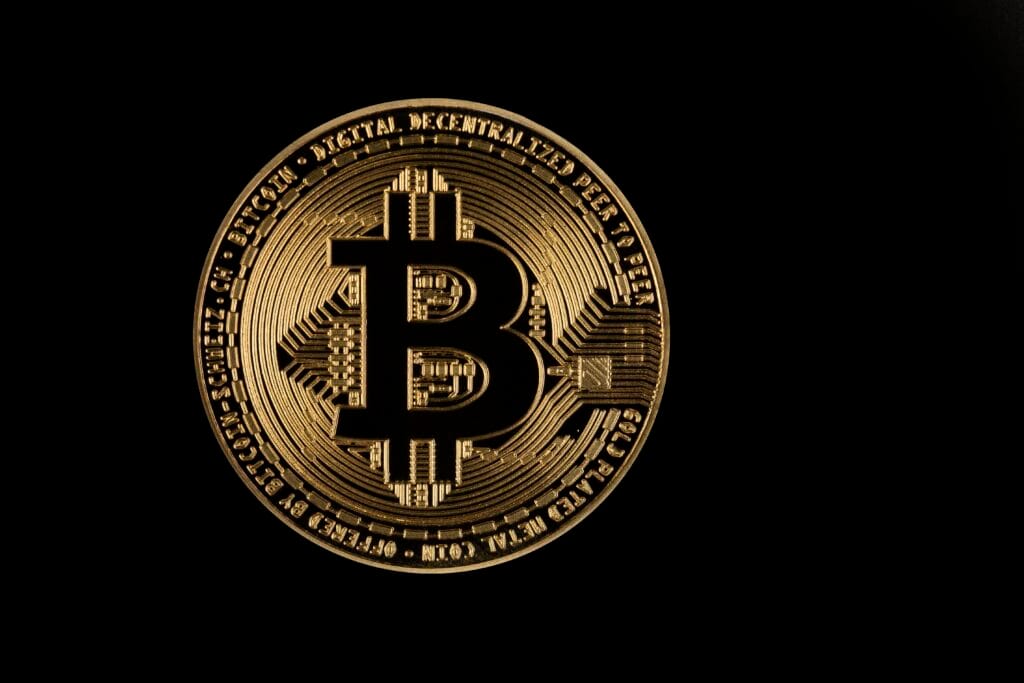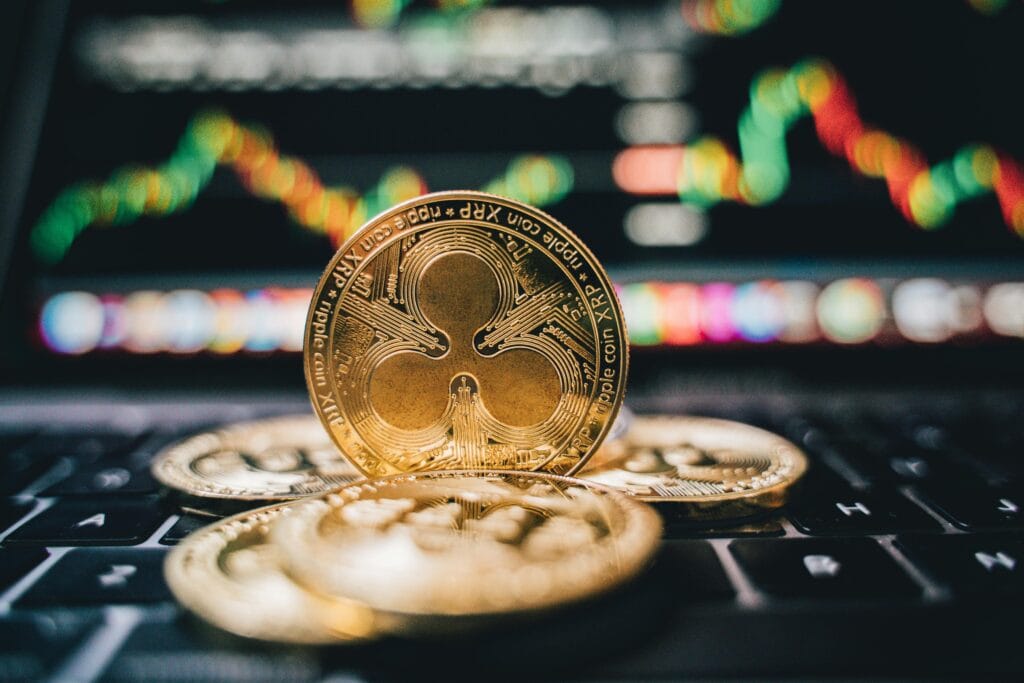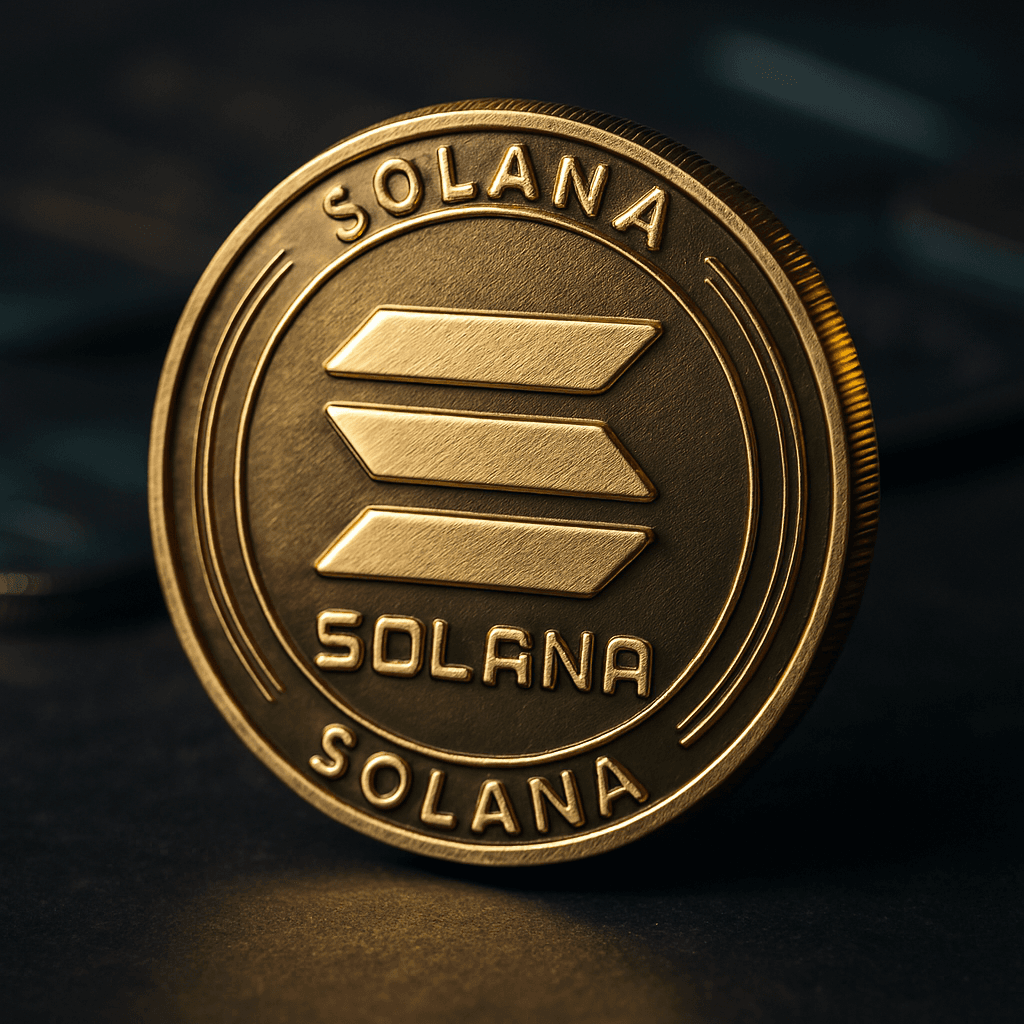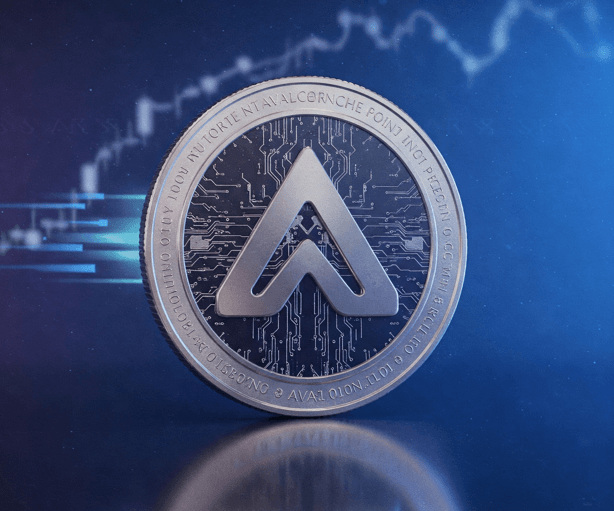Top 10 Crypto Coins to Invest in 2025
By expert

As of April 2025, the cryptocurrency market has experienced significant shifts, with several digital assets emerging as strong contenders for investment. Recent developments, including favorable regulatory changes and increased institutional adoption, have bolstered the prospects of various cryptocurrencies. Here are ten cryptocurrencies that investors might consider for 2025:
1 ) Bitcoin (BTC)

Bitcoin continues to lead the cryptocurrency market, maintaining its status as digital gold. The recent inclusion of Bitcoin in the U.S. “Crypto Strategic Reserve” has further cemented its legitimacy and potential for growth. Analysts predict that Bitcoin could reach between $120,000 and $200,000 by the end of 2025, driven by increasing institutional adoption and favorable regulatory developments.
2 ) Ethereum (ETH)

Ethereum remains the backbone of decentralized applications (dApps) and decentralized finance (DeFi). The transition to Ethereum 2.0, aiming to improve scalability and reduce energy consumption, is expected to enhance its utility and value. Price forecasts suggest Ethereum could approach $10,000 by 2025, supported by its dominant position in the DeFi and NFT markets.
3 ) Ripple (XRP)

Ripple has gained renewed attention following its partial legal victories and its inclusion in the U.S. Crypto Strategic Reserve. These developments position XRP as a key player in global remittance services. Experts anticipate that XRP could reach $10 by 2025, fueled by expanded cross-border payment partnerships and potential central bank adoption.
4 ) Solana (SOL)

Solana’s high transaction speeds and low fees have made it a popular platform for DeFi and NFT applications. Continued network enhancements and developer incentives could drive SOL’s price to $500 by 2025.
5 ) Cardano (ADA)

Cardano’s scientific approach to blockchain development has attracted institutional interest. Anticipated upgrades, such as the Hydra scalability solution, position ADA for significant growth, with projections suggesting a price of $12 by 2025.
6 ) Binance Coin (BNB)

Overview: BNB is the native cryptocurrency of the Binance exchange, one of the world’s largest crypto exchanges. Initially created as a utility token for discounted trading fees, its use cases have expanded significantly.
Market Position: BNB is utilized for transaction fees on Binance Smart Chain, participating in token sales, and more, solidifying its utility in the Binance ecosystem.
Recent Developments: Binance’s continuous expansion and introduction of new services have contributed to BNB’s growing adoption.
7 ) Polkadot (DOT)

Polkadot facilitates interoperability between different blockchains, enabling seamless data transfer. Its unique parachain system has attracted a growing developer community. Projections suggest DOT could hit $100 by 2025, supported by its expanding ecosystem and cross-chain capabilities.
8 )Dogecoin (DOGE)

Market Position: Despite its origins, Dogecoin has been used for charitable endeavors and as a tipping currency online, maintaining a notable presence in the crypto space.
Recent Developments: High-profile endorsements and community-driven initiatives continue to influence Dogecoin’s market dynamics.
Overview: Created as a meme in 2013, Dogecoin has evolved into a widely recognized cryptocurrency with a strong community.
9 ) Avalanche (AVAX)

Avalanche (AVAX) is a blockchain platform designed to provide high throughput, low latency, and scalability, enabling the creation of decentralized applications (dApps) and enterprise solutions. It aims to address some of the scalability issues faced by earlier blockchains, such as Ethereum. Avalanche has positioned itself as a strong competitor in the smart contract and DeFi space due to its scalability and low fees. As more dApps and decentralized finance platforms look for alternatives to Ethereum, Avalanche could see further adoption, especially if its ecosystem continues to grow.
10 ) Shiba Inu (SHIB)

Shiba Inu is an Ethereum-based token that gained popularity as a “meme coin” and has developed its own decentralized ecosystem.
Market Position: Initially considered a joke, SHIB has garnered a significant following and has been integrated into various platforms and services.
Recent Developments: The development of ShibaSwap, a decentralized exchange, and other ecosystem initiatives have added utility to SHIB.
Is Crypto Mining a good way to make Money?
Crypto mining can be profitable, but it depends on several factors, including electricity costs, hardware efficiency, market conditions, and regulatory policies. Let’s explore the key aspects:
1. How Crypto Mining Works
Crypto mining involves solving complex mathematical problems to validate transactions on a blockchain network. Miners use specialized hardware to compete for block rewards, which include newly minted coins and transaction fees.
Types of Crypto Mining:
- Proof of Work (PoW) Mining (e.g., Bitcoin, Ethereum Classic)
- Proof of Stake (PoS) Staking (not traditional mining but still a way to earn)
- Cloud Mining (renting hash power instead of using your own equipment)
2. Profitability Factors
Several factors determine whether crypto mining is profitable:
A. Hardware Costs
- High-performance mining equipment (ASICs, GPUs) is expensive.
- ASIC miners (Application-Specific Integrated Circuits) are more efficient but costly.
- GPUs (Graphics Processing Units) are more flexible and can mine multiple coins.
B. Electricity Costs
- Mining consumes a lot of electricity, and power costs significantly impact profitability.
- Miners in countries with cheap electricity (e.g., China, Russia, Venezuela) have an advantage.
C. Mining Difficulty & Competition
- As more miners join, mining difficulty increases, requiring better hardware.
- The rewards decrease over time (e.g., Bitcoin halving events every 4 years).
D. Market Conditions
- If crypto prices rise, mining becomes more profitable.
- Bear markets (price declines) reduce mining profits.
E. Regulations & Taxes
- Some countries ban mining due to energy concerns.
- Taxation on mining rewards can affect net earnings.
3. How Much Can You Earn?
Bitcoin (BTC) Example:
- A top-tier ASIC miner (e.g., Bitmain Antminer S19 Pro) generates about $5–$15 per day at current BTC prices and difficulty.
- Electricity costs can eat up 50% or more of earnings.
- After hardware and electricity costs, it might take 6–24 months to break even.
Altcoin Mining (ETH, RVN, ETC, etc.)
- Mining lesser-known cryptocurrencies can be more profitable initially.
- Coins like Ethereum Classic (ETC) or Ravencoin (RVN) have lower mining difficulty than Bitcoin.
- However, their long-term value is uncertain.
4. Alternative Mining Methods
A. Cloud Mining
- Renting mining power from a company instead of buying equipment.
- Often unprofitable due to high fees and potential scams.
B. GPU Mining
- More flexible than ASICs (can switch between different coins).
- Good for mining Ethereum Classic (ETC), Ergo (ERG), or Flux (FLUX).
C. Staking (PoS)
- Not mining, but an alternative way to earn by locking up coins.
- Examples: Ethereum (ETH) staking, Cardano (ADA), Solana (SOL).
5. Risks of Crypto Mining
- High upfront costs (hardware, setup, cooling systems).
- Electricity expenses can exceed earnings in some regions.
- Mining difficulty increases, reducing rewards over time.
- Regulatory risks (some governments ban mining).
- Hardware depreciation (ASICs become obsolete after 2–3 years).
6. Conclusion: Is It Worth It?
✅ Good for Profitability IF:
- You have cheap electricity (<$0.05 per kWh).
- You invest in efficient mining hardware.
- Crypto prices remain high or increase.
❌ Not Worth It IF:
- Electricity costs are high (> $0.10 per kWh).
- You don’t have access to mining-friendly locations.
- You expect quick and easy profits.
Alternative: If mining isn’t viable, consider crypto staking, trading, or investing in blockchain projects.
Does Crypto Mining have a future ?
Crypto mining has been a fundamental part of blockchain technology, but its future depends on multiple factors like regulations, energy consumption, and evolving consensus mechanisms. Let’s explore the future prospects of crypto mining in detail.
1. The Current State of Crypto Mining
Crypto mining, particularly Proof-of-Work (PoW) mining, has been a lucrative industry since Bitcoin’s inception in 2009. However, it faces challenges such as increasing mining difficulty, rising energy costs, and government crackdowns.
Current Trends in Mining:
- Bitcoin (BTC) Mining Dominance: Still the most profitable PoW mining option.
- Ethereum Shift to Proof of Stake (PoS): Ethereum moved from PoW to PoS in 2022, reducing GPU mining profitability.
- Emergence of Alternative PoW Coins: Miners are shifting to Ethereum Classic (ETC), Ravencoin (RVN), and Ergo (ERG).
- Industrial-Scale Mining: Large mining farms are outcompeting individual miners.
- Environmental Concerns: Governments are targeting PoW mining due to high electricity consumption.
2. Challenges Facing Crypto Mining
Several challenges could affect the future of mining:
A. Regulatory Uncertainty
- Government Crackdowns: Countries like China and Kazakhstan have banned or restricted mining.
- Taxation & Legal Compliance: Many countries are imposing heavy taxes on mining profits.
- Licensing Requirements: Miners may need legal approval in some regions.
B. Rising Energy Costs & Environmental Impact
- PoW mining consumes massive amounts of electricity.
- Carbon footprint concerns could lead to stricter environmental regulations.
- Some countries promote green mining using renewable energy (hydroelectric, solar, nuclear).
C. Increasing Mining Difficulty
- Bitcoin’s mining difficulty increases over time, requiring stronger hardware.
- Mining rewards decrease due to Bitcoin halving events (every 4 years).
- Only miners with cheap electricity and powerful hardware remain profitable.
3. Opportunities & The Future of Crypto Mining
Despite the challenges, mining still has a future due to these factors:
A. The Role of Bitcoin Mining
- Bitcoin will always require miners as it operates on PoW.
- With Bitcoin halving in 2024 and 2028, scarcity could drive up BTC prices, making mining more profitable.
- Mining rewards could shift from block rewards to transaction fees over time.
B. Shift to Renewable Energy & Green Mining
- Companies are investing in eco-friendly mining solutions.
- El Salvador and Texas use geothermal and wind power for Bitcoin mining.
- Carbon-neutral mining initiatives could sustain the industry.
C. AI & Mining Technology Advancements
- More efficient mining rigs like Bitmain’s Antminer S21 are reducing power consumption.
- AI-powered mining optimizes energy use and profitability.
D. Expansion of Alternative Proof-of-Work Coins
- Ethereum’s PoS shift left GPU miners searching for alternatives.
- Ethereum Classic (ETC), Kaspa (KAS), Ergo (ERG), and Flux (FLUX) are attracting miners.
- Some new cryptocurrencies may emerge using PoW mining.
4. Will Crypto Mining Exist in the Future?
✅ Yes, but it will evolve.
- Bitcoin mining will remain, but centralization will increase (large farms over small miners).
- Green energy adoption will become crucial for miners.
- Alternative PoW coins may rise, but Ethereum and most new projects prefer PoS.
If you want to invest in mining, focus on Bitcoin or eco-friendly mining projects. Do you need guidance on mining hardware or mining-friendly locations?
How Does Bitcoin Mining Work? A Beginner’s Guide
Bitcoin Mining: A Beginner’s Guide
Bitcoin mining is the process of verifying transactions and adding them to the Bitcoin blockchain. Miners use powerful computers to solve complex mathematical problems, securing the network and earning Bitcoin as a reward.
1. What is Bitcoin Mining?
Bitcoin mining is a process that:
- Verifies transactions on the Bitcoin network.
- Secures the blockchain against fraud and hacks.
- Rewards miners with new Bitcoin (BTC) and transaction fees.
It follows a system called Proof of Work (PoW), where miners compete to solve a cryptographic puzzle. The first to solve it gets to add a new block to the blockchain and earn a reward.
2. How Does Bitcoin Mining Work?
Step 1: Transactions are Collected into Blocks
- Bitcoin users send BTC to others.
- These transactions are grouped into a “block” waiting for validation.
Step 2: Miners Solve a Complex Math Puzzle
- The puzzle involves finding a hash (a unique alphanumeric string).
- Miners use specialized computers to guess this hash.
- The process requires enormous computational power.
Step 3: First Miner to Solve the Puzzle Wins
- The miner who finds the correct hash first gets the right to add the block to the blockchain.
- Other miners verify the solution.
Step 4: New Bitcoin is Minted & Rewarded
- The winning miner earns:
- Newly created BTC (block reward).
- Transaction fees from included transactions.
- The cycle repeats every 10 minutes.
3. What Equipment is Needed for Bitcoin Mining?
Bitcoin mining requires specialized hardware:
A. Mining Hardware
- ASIC Miners (Application-Specific Integrated Circuits) – Powerful machines designed specifically for Bitcoin mining. Examples:
- Bitmain Antminer S19 Pro
- Whatsminer M50S
- AvalonMiner 1246
- GPU Mining (Graphics Processing Units) – Not effective for Bitcoin, but used for other cryptocurrencies.
B. Mining Software
- CGMiner
- BFGMiner
- NiceHash
C. Electricity & Cooling System
- Mining consumes a lot of power, so cheap electricity is essential.
- Cooling systems prevent overheating.
4. How Do Miners Earn Money?
Bitcoin miners make money in two ways:
- Block Rewards (New BTC)
- Every time a miner adds a block, they receive Bitcoin as a reward.
- Current reward (as of 2024): 3.125 BTC per block (after the 2024 halving).
- Rewards halve every four years (next halving in 2028).
- Transaction Fees
- Users pay small fees for transactions.
- Miners earn these fees along with block rewards.
5. Challenges & Costs of Bitcoin Mining
Mining isn’t free money—it comes with risks:
A. High Electricity Costs
- Bitcoin mining consumes a lot of energy.
- Profits depend on cheap electricity (<$0.05 per kWh).
B. Increasing Difficulty
- More miners = Harder puzzles = Lower profits.
C. Hardware Costs
- ASIC miners cost $2,000–$10,000+ each.
- They become obsolete in 2–3 years.
D. Government Regulations
- Some countries ban mining due to energy concerns.
- Others tax mining profits heavily.
6. Can You Start Bitcoin Mining?
✅ Good if:
- You have cheap electricity.
- You invest in efficient ASIC miners.
- You join a mining pool to increase chances of earning.
❌ Not Ideal if:
- Electricity is expensive.
- You expect quick profits.
- You lack technical knowledge.
7. Alternative Ways to Earn Bitcoin
If direct mining isn’t viable, consider:
- Cloud Mining – Rent mining power from a provider (risk of scams).
- Staking & Yield Farming – Not for BTC but works with other coins.
- Trading & Investing – Buy Bitcoin instead of mining.
Conclusion: Is Bitcoin Mining Worth It?
✅ Yes, if: You have cheap electricity, advanced hardware, and patience.
❌ No, if: Costs are high, or you expect quick returns.

Leave a Reply